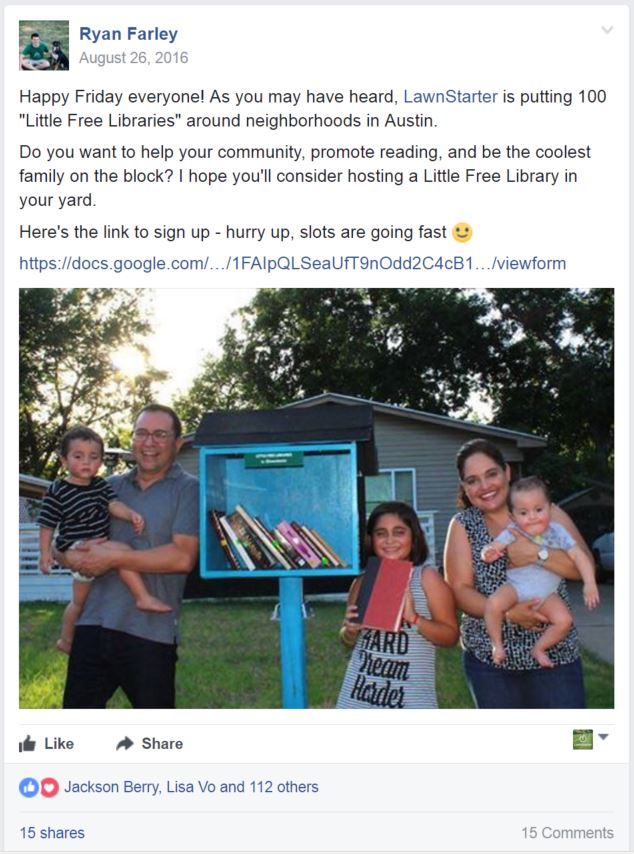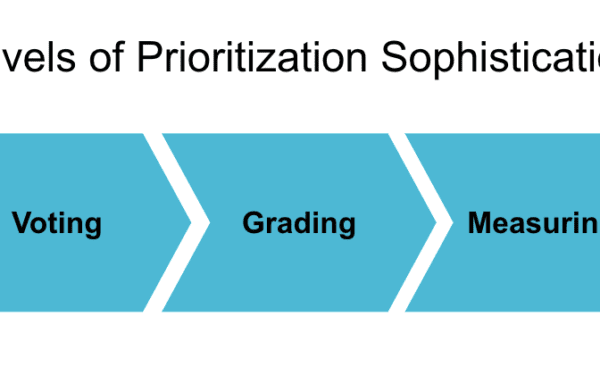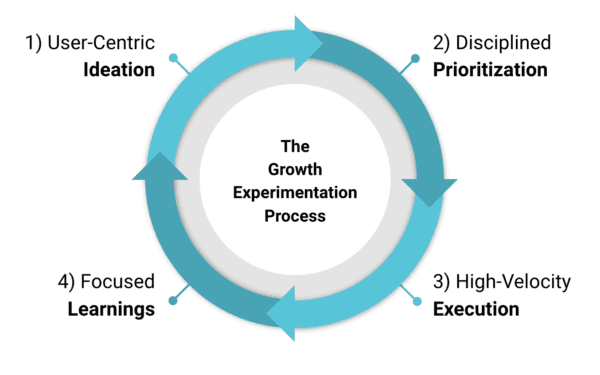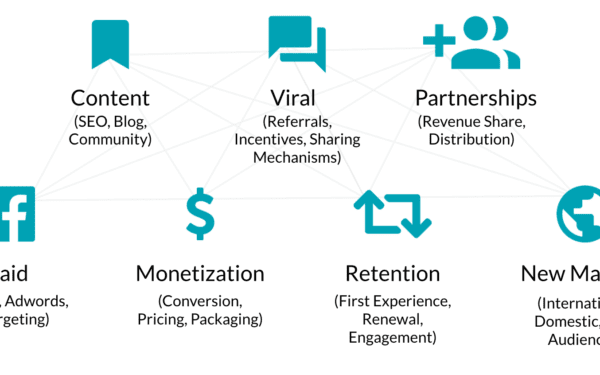I was leading a brand awareness initiative to build LawnStarter Little Libraries for homes across Austin; In only a week I had thrown together a landing page and a few email lists I scraped. Now it was time to send out an initial email and measure conversions. Then, in a 1 on 1 meeting with Ryan, the COO of LawnStarter and my manager at the time, he asked me how many people had signed up so far – to which I explained that none had yet and we were about to send out an email. Right in that meeting we made a simple Google form and posted it to a Facebook group; it got an amazing response from the group along with many sign-ups – so we had validated in 30 minutes that there was some demand when we didn’t have much concrete to go off of before, but what if I had spent a week setting everything up for a proper test and it flopped? That’s when I realized that the most commonly overlooked step in hypothesis testing is validation; how can I be confident that the time I am investing in doing a test is likely to be fruitful?
The challenge with testing, is time.
You see it again and again in startups – a backlog of hypotheses that are in queue to be tested. In some cases they are the most high-value items to be done and in that order, but many times the it can be done much simpler and quicker. Just like a product manager manages the backlog and product roadmap, so too does marketing need to be smart and deliberate with prioritizing initiatives. After all, time is the most important asset to a startup is it not?
Don’t forget the basics.
Keep in mind that there are defined phases to solving any problem, and here they are – the step that everyone neglects? Validate:
The thing is, many people are too confident in and rely too heavily on their existing subject expertise, and think they have some tests already in mind that are clearly the most high-value, but what discovery and insights are those based off, are they truly customer-centric, and how do you know they are likely to succeed – did you validate?
You only hurt yourself if you don’t start with discovery.
If you haven’t gotten feedback on your hypothesis, haven’t talked with customers, haven’t compared it to other hypotheses, chances are that it isn’t fully developed or won’t give you the best ROI for your time. Typically, the biggest mistake made in this step is not talking with the customer. Sure, you can analyze some datasets, talk with other subject experts in the company, do some critical thinking – but while you are at it, call a customer or 3 or send out a google form to a small audience, it’s not that hard! Yet this is probably the most important stage, and it is where many veer off path from customer-centric to brand-centric solutions. There are two audiences that you need to cover on any question: those that are your biggest advocates and those that were close to converting but didn’t, don’t operate in a bubble!
Analysis doesn’t have to be that complex.
Here is a simple approach that I use for prioritizing the insights and ideas that come from discovery in the first stage. Everyone has their own approach, but then again.. do they? Don’t shoot from the hip, do something like this:
Ease = How easy to execute.
Impact = Anticipated results to the bottom line or KPI.
Feasibility = How confident you are that it will be successful.
The other grading factor I would think about adding is speed – how fast you can determine the potential ROI of the idea.
MVP your MVP by validating.
Ok so you have your hypothesis and have graded it to determine that you believe it to be the most valuable, and you probably have some idea of how you would like to test it. Now take the core insight that drives the idea and simplify it down to it’s core, for example, with the LawnStarter Little Libraries it was that people wanted these Little Libraries so much that they would sign-up to host one in their front yard – how would you test that? If It takes more than a day or two to validate, that is too long, hell it should take only a half day if you do it right. Take whatever you were going to do and simplify it down, and then simplify it down again. And I know what you are thinking, all of this takes time, I thought that is what we are trying to optimize for! – Yes, that is true, but what if you spend a week or two on a test that flops, then look back at how much time was wasted? You don’t have to validate just one hypothesis at a time, you should be able to validate the top 5 on the list in a day or two, then you have the confidence to commit one to two weeks of time, and what’s equally important is getting that additional layer of feedback and insight from validation that helps you refine and polish.
Go forth and conquer.
In conclusion, don’t skip over crucial steps in the problem solving process, you will thank yourself when you realize you made smarter decisions and have a more customer-centric outcome. Have a method, VC-funded startups can’t afford to prioritize like it is the wild west anymore. And do more by doing less, you are doing too much, just do what you are doing, but less.






